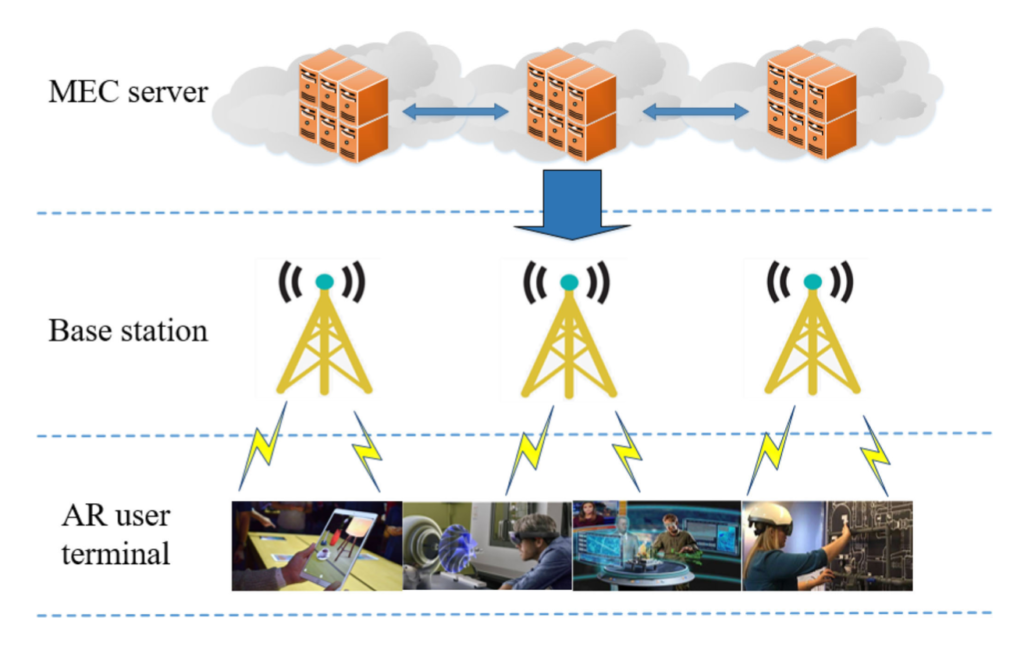Of all the new immersive video applications emerging with advances in mobile connectivity, perhaps none pack the transformative potential of augmented and virtual reality (AR and VR). Though these technologies have been in existence for some time, new advances in immersion enabled by fifth-generation mobile connectivity (5G) are poised to finally unlock their full power to revolutionize everything from education and training, to telemedicine, to industrial design and entertainment.
Today, many AR and VR applications rely on central cloud processing, where tasks with large computing loads are offloaded to a cloud located a considerable physical distance away from the user. Such processing consumes significant energy and adds inherent latency, two drawbacks that are particularly detrimental to the use of AR and VR, which rely on battery power and where low delay is critical.
The emergence of mobile-edge computing (MEC) offers a promising solution to these challenges, and a team in China has recently published a paper outlining how this technique can be optimized. MEC syncs the central cloud computing service to the edge of the core network, which is much closer to the data generated by users, dramatically cutting down on latency. When users request content or offload tasks, they can access the MEC server directly rather than communicating out to the remote central cloud.

Multi-MEC system model.
Still, the MEC approach to AR and VR isn’t easily accomplished with generic or heuristic algorithms, which can struggle to quickly administer aspects like task offloading decisions and uplink/downlink transmission resources allocation when presented with problems like mixed multiuser competition.
To address these challenges, the team presents an energy-efficient task offloading and resource allocation scheme for AR in both single- and multi-MEC systems. The scheme incorporates several novel approaches including more detailed task modeling, whereby the AR application is split into five parts according to the execution process to better utilize resources in; a more realistic optimization objective setting, which minimizes the energy consumption of each user without exceeding the delay requirements; and a joint optimization algorithm of resource allocation, which uses a Markov decision process (MDP) to utilize the multiagent deep deterministic policy gradient.

Workflow diagram of the system.
According to the authors, Xing Chen, Ph.D. candidate at the School of Information and Communications Engineering at Xi’an Jiaotong University in Xi’an, China, and Guizhong Liu, IEEE member and professor at the School of Electronics and Information Engineering at Xi’an Jiaotong University, their intelligent and efficient resource allocation and task offloading algorithm has the potential to improve the performance of AR applications: simulations running their optimization show that the proposed algorithm can indeed reduce the energy consumption of each AR user terminal.
The paper provides an in-depth look at the challenges at hand, with an outline of the development of related work. The authors then delve deep into the creation of communication models, caching, and computation, provide detailed insights into the mathematical problem and joint optimization model and propose the algorithm. Finally, the authors put forth numerical simulation results of the convergence property, reward, and energy consumption that show the degree to which the algorithm enhances the energy efficiency for AR.
View the full-text article on IEEE Xplore. Read the first page for free. Full article available with purchase or subscription. Contact us to see if your organization qualifies for a free trial.
Interested in expanding your knowledge on Edge Computing and Augmented Reality? IEEE offers continuing education course programs on both topics: Practical Applications of AR/VR Technology and IEEE Introduction to Edge Computing.





